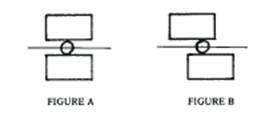There is a definite correlation between health problems and symptoms, and the misaligned vertebrae of the spine. There are three important components to a well-balanced, healthy individualstructural or postural, chemical, and emotional all working in harmony with each other.
Imbalance occurs when this harmony is disrupted, resulting in disease. Certain physical or somatic symptoms may have psychological origins; the reverse is also true.
Cause and Effect
Simply stated, good posture usually means good health. Think of the muscles, bones (spine) and nerves all interdependent, interacting and interconnected, all exerting a pulling effect on each other. Here is one example: a weak muscle (often indicating a weak organ) causes spinal misalignment by pulling a bone of the spine out of place, which in turn blocks the nerves that pass through the tiny openings in the spinal vertebrae, causing nerve interference. Here is where a skilled chiropractor is trained and qualified to free the nerve system of interference, restoring normal body function and thereby removing what might be the_ basic cause of a health problem.
Explaining this another way, visualize two blocks of wood representing two vertebrae of the spine, one on top of the Other.

In Figure A there is alignment between the one above in relation to the one below, whereas in Figure B, the blocks of wood or vertebrae are misaligned. When this happens, the two vertabraeexert pressure on tiny nerves in between them at a point in the spine. This results in what is commonly known as a pinched nerve, causing a blockage in the area, interrupting the flow of messages from the brain to the spinal chord and the organs (heart, lungs, kidneys, glands, etc.). The chiropractor then proceeds to remove this blockage in the spine by adjusting the vertebra back to its correct position. Communication is once again established between the brain and the spinal chord, and the signals then reach the organs to stimulate proper function again. Very simply then, when this adjustment is given, homeostasis is reestablished. Healing starts taking place, circulation is improved and nutrients are better absorbed.
Structural defects of the spine can cause abnormalities, anatomical variations and malformations of the spine. This can bring about changes in body chemistry, increase mental and physical stress, and sometimes even induce bizarre behavior patterns.
A chiropractor pays special attention to rotations, subluxations (misalignments), fixations, offcenterings and abnormal spaces between vertebrae. He analyzes and corrects spinal curvatures, such as lordosis, scoliosis, kyphosis, etc. A good example would be the very first cervical (neck) vertebrae called atlas. The atlas can be rotated in so many different directions, causing spinal subluxations. Structural defects of the spine can lead to spinal stress causing pain, spasms, inflammations, contractions, etc.
Spinal Stress
Quite often, the areas of greatest physical spinal stress due to trauma (injury) or wear and tear are:
- The Atlas 1st and 3rd cervical vertebrae
- The 6th and 7th dorsals (mid-back)
- The 4th and 5th lumbars (low-back)
Whenever our body is under severe stress beyond its limit, compensation takes place. If stress continues further and the whole neuro-muscular system gets overloaded, it can break down; then malfunction and disease can occur.
Compensating Mechanisms
Physical stress of the spine, muscles and ligaments brings about compensating mechanisms, creating postural defects. Example: the head tilts to one side, the shoulder raises on the other side; the hip raises on one side, so the leg gets shorter. Compensatory factors take over at this point and more body weight is shifted to the other leg to balance the body while standing or walking, etc. However, compensations usually start with mild to severe pain. This in turn causes further spinal distortions to which the body has to adapt, perhaps in a different direction this time. Existing distortions over a period of time result in reduced range of motion.
After a further period of time, these distortions result in fixations of the spine, thus producing further distortions and other remote pathologies.
Briefly, to sum up, it may be said that spinal stress results in compensations, distortions, reduced range of motion, fixations and further spinal distortions. At this stage the patient may show symptoms of disease. A routine spinal checkup would be the best form of prevention, therapy and treatment.





